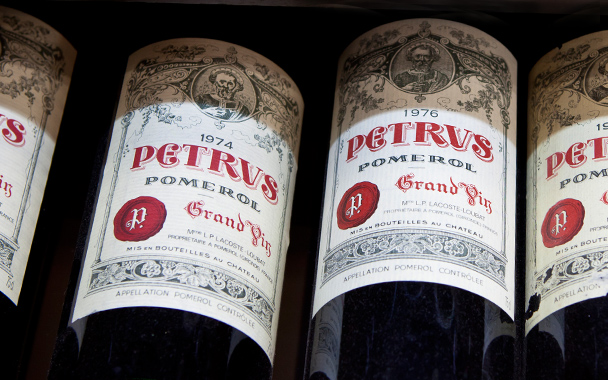If you’re ever lucky enough to have a sip of Chateau Haut-Brion 1989, a wine hailed by many critics as one of the best Bordeaux of the 20th century, make sure you’re sitting down. You’ll need some time to savor a wine that is massively concentrated, full of deep, dark, and intense fruit flavors. The finish, or aftertaste—the single most important factor in evaluating quality—lasts for many minutes. This giant needs perhaps 20 or 30 years of cellaring, or more, to reach full maturity. It’s a wine for the ages.
An experience of this kind comes at a price, of course. As recently as 2000, a bottle of Haut-Brion 1989 was going for an average of $341 at Sotheby’s, the famed British auction house with branches around the world. Expensive, sure, but some would say it was a small price to pay for a memorable experience. Fast-forward to 2011: The same bottle averaged $1,341 at Sotheby’s, almost quadruple its price in 2000, bringing to mind a comparable rise in one of the better financial investments of the Aughts—shares of Apple, Inc.
And that’s just one example. Château Lafite Rothschild 1982, another legendary Bordeaux, was going for about the same price at Sotheby’s in 2000: $316 per bottle. But last year it averaged just under a whopping $4,000 per bottle, making that Haut-Brion 1989 look cheap.
Fine wine has experienced a rare kind of boom—and over an economically adverse decade. But why? Collectors’ motivations vary from the purely financial to the purely oenophiliac, according to Scott Torrence, vice president and senior wine specialist at the Los Angeles office of Christie’s: “Speculators have always been a very small part of the market—I’d say under 10 percent. Sure, some people want to purchase immediate status. And it’s not speaking ill of my clients when I say that. But for most people, wine is an extension of one’s social life. It’s a reason to call forth a gathering.”
The past 20 years have seen the birth of some new avenues of sale for fine wines, including online commerce. But the sales boom at the high end of the wine market reflects significant structural changes in the auction world. “Two big changes took place in the last 20 years to fuel this, and both of them were regulatory,” notes Jamie Ritchie, CEO and president of Sotheby’s Wine in the Americas and Asia.
The first change was the 1994 legalization of wine auctions in New York City, which sent American sales skyrocketing. London had always been the wine trade’s center of gravity, but once New York got started, the action shifted fairly quickly to the Big Apple. In 1995, Christie’s New York auctioned off approximately $4 million of wine; a year of momentum later, the figure had more than tripled. Area shops that were formerly retail-only, like Zachys and Morrell & Company, got into the game and became auctioneers, too.
The second notable change in the wine-auction world came in Hong Kong: In 2008 the government eliminated the tax on wine purchases. Coincidentally, this move was made just as much of the world’s economy tanked. “In January 2009, when we were prepared for a terrible two years, the Asian market exploded, particularly driven by the Mainland Chinese,” says Ritchie.
Dr. Kevin Chan, a Hong Kong–based orthodontist and collector, has seen the excitement up close. “There’s been a real frenzy from Chinese buyers in the past year,” says Chan, who is himself a serious buyer of red Bordeaux (typically at least 60 to 70 percent of a typical wine auction), Burgundy, and California wines. The scene in Hong Kong is “extreme,” Chan reports. “We have some hard-core collectors.” When Christie’s Hong Kong auctioned off a case of Henri Jayer Vosne-Romanée Cros-Parantoux 1985 direct from the winery’s own cellar, in February, it went for $265,000. Desmond Chum, a Hong Kong hedge fund executive and major collector, put down his paddle in amazement at prices he calls “insane.”
With all that money at stake, perhaps it’s not surprising that some people are tempted to counterfeit the most expensive old vintages. Very few buyers, after all, have the expertise to know the difference. In March, Rudy Kurniawan, a noted California-based wine dealer and collector, was charged with large-scale fraud and counterfeiting. Oil heir Bill Koch has made huge headlines over the past several years, and inspired the book The Billionaire’s Vinegar, by suing several parties for selling him bottles he claims are fake, including some that purportedly were owned by Thomas Jefferson.



 Pinterest
Pinterest


